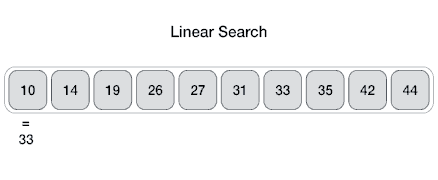-
-
Notifications
You must be signed in to change notification settings - Fork 5.8k
Search Algorithms
From Wikipedia: linear search or sequential search is a method for finding a target value within a list. It sequentially checks each element of the list for the target value until a match is found or until all the elements have been searched. The linear search runs in at the worst linear time and makes at most n comparisons, where n is the length of the list.
Properties
- Worst case performance O(n)
- Best case performance O(1)
- Average case performance O(n)
- Worst case space complexity O(1) iterative
From Wikipedia: Binary search, also known as half-interval search or logarithmic search, is a search algorithm that finds the position of a target value within a sorted array. It compares the target value to the middle element of the array; if they are unequal, the half in which the target cannot lie is eliminated and the search continues on the remaining half until it is successful.
Properties
- Worst case performance O(log n)
- Best case performance O(1)
- Average case performance O(log n)
- Worst case space complexity O(1)
From Wikipedia: Jump search or block search refers to a search algorithm for ordered lists. It works by first checking all items Lkm, where {\displaystyle k\in \mathbb {N} } k\in \mathbb {N} and m is the block size, until an item is found that is larger than the search key. To find the exact position of the search key in the list a linear search is performed on the sublist L[(k-1)m, km].
Properties
- Worst case performance O(n)
- Best case performance O(√n)
- Average case performance O(√n)
- Worst case space complexity O(1)


